TULIP POPLAR
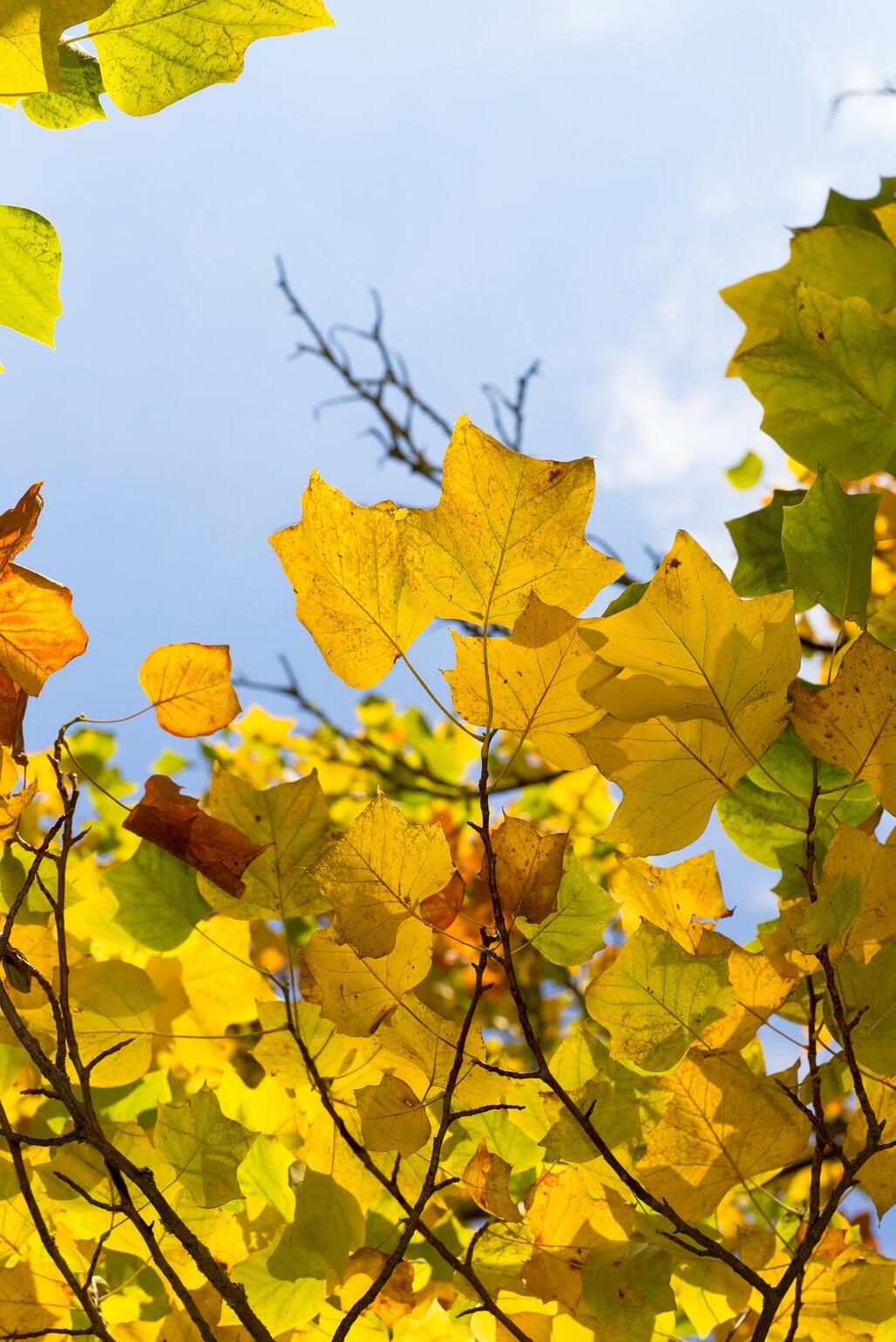
Dormant Season
Field Protocols
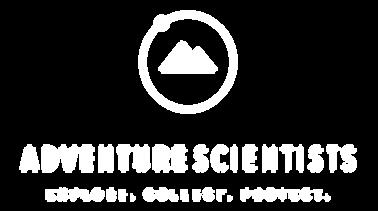



*SOME kits include an increment borer, beeswax and paper straws for locations that need tree cores.*
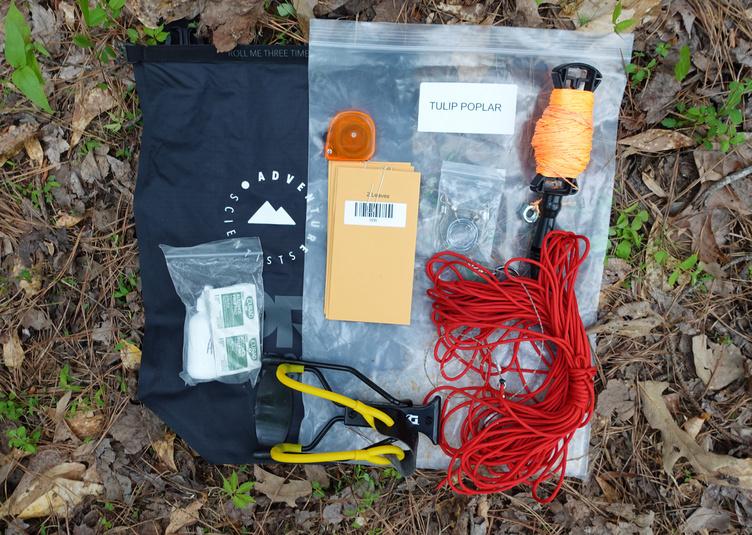
WE PROVIDE:
Stuff sack Bag with silica desiccant*
Alcohol kit for cleaning*
Measuring tape*
Saw-toss tool*

Envelopes for samples*
PROVIDE:
Smartphone*
Binoculars (very helpful)
Pocket knife or scissors (very helpful)
*Required
Use the sign up map to identify a park you’d like to visit. Read the permit requirements (some parks require you to call ahead before visiting).
If you are collecting on private land, make sure you have explicit permission from the landowner (verbal or written).
Fill out the form to sign up for your permit. If no further action is needed, it will be emailed to you immediately. Download the permit to your phone or print it to carry with you.
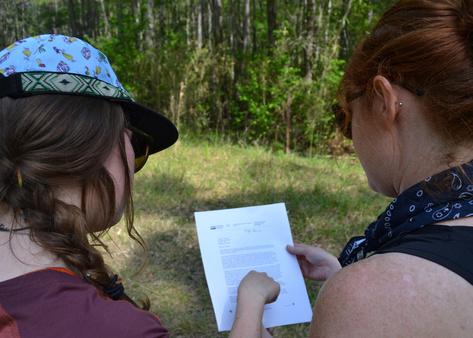
PRO
Tulip trees are commonly planted, but this project needs samples from wild growing trees. Make sure that any trees you sample on private land are:
Make sure you've read the permit thoroughly and are following the requirements. Verify the tree species and maximum number of trees to be sampled, if tree cores are allowed, and if anyone needs to be notified ahead of your visit.
within a forested area, not a landscaped area not located within 500 meters of buildings or other developed areas (e.g. picnic areas, major roads)
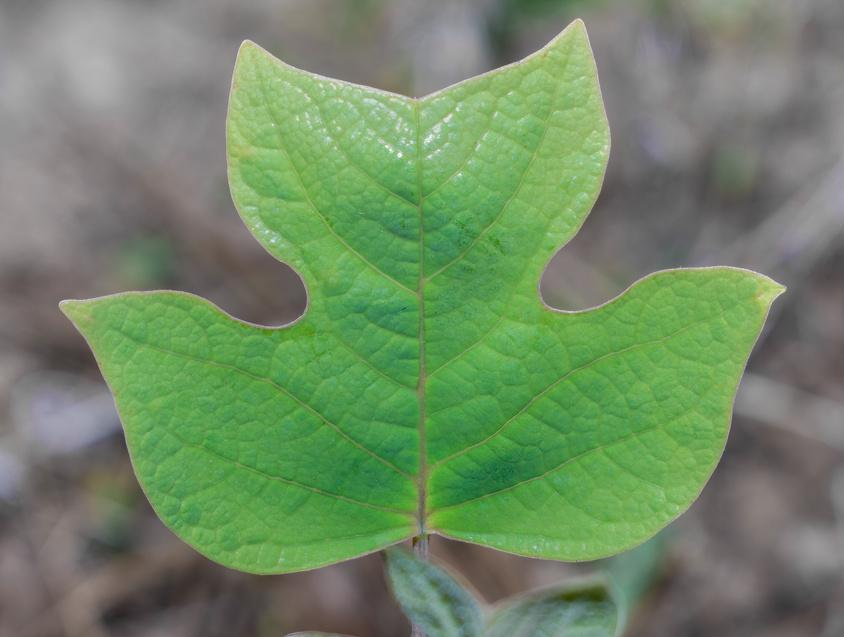
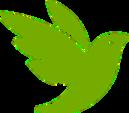
You can use the app, iNaturalist, to guide you. Search for previously logged tulip poplar trees using the Explore feature in the app, and navigate to the park you want to visit.
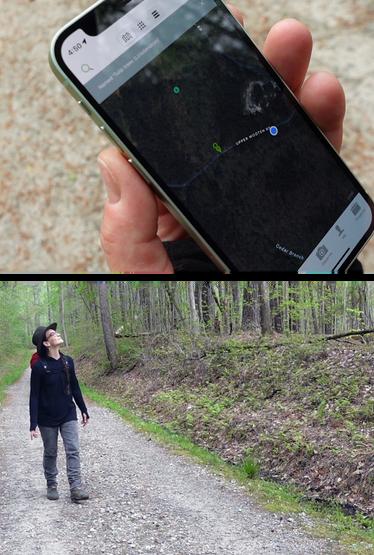
Tulip poplar prefers moderately-moist to well-drained soils, north and east aspects on gentle slopes. They rarely grow above 4,500 ft. Look up! These trees have tall, straight, light-colored trucks, often with the first branches occurring a high distance from the ground. Scan the canopy and forest floor for tulip poplar's distinct leaf shape.
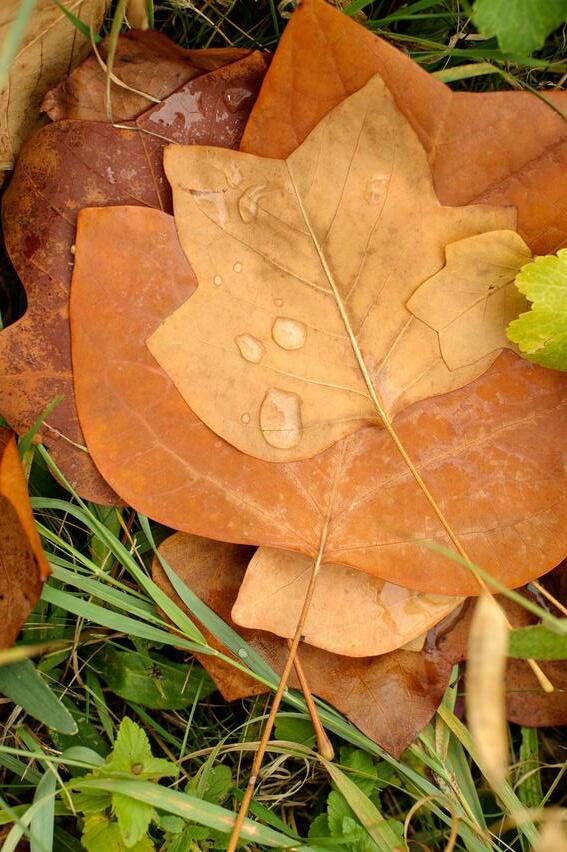
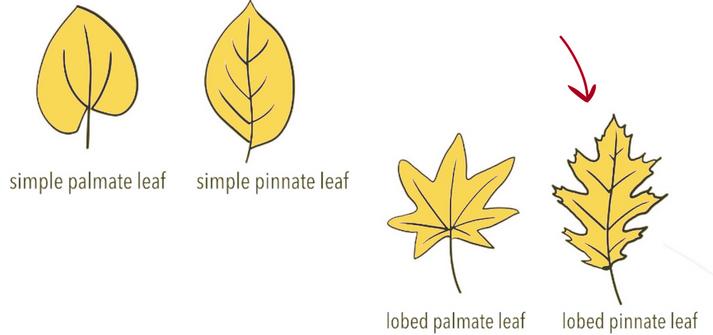
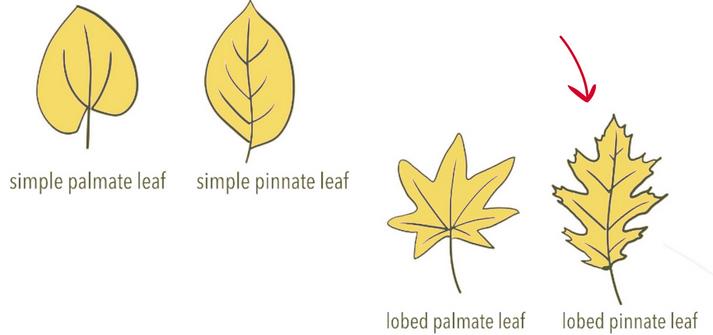
Look at the leaf veins to see if the leaf is pinnate or palmate. Pinnate leaves have veins that branch off a central vein. Palmate leaves have veins originating from a single point.
Tulip poplar leaves have a unique shape!
They have four lobes, and a shape reminiscent of a tulip.
Tulip poplar leaves are lobed, pinnate. 1
The leaf edges are smooth, containing no teeth or serration.
2 3 4
You can use Seek, an app by iNaturalist, as additional help for identifying tulip poplar.
4 lobes per leaf

Large, distinctive leaves can be spotted from below if you look up into the canopy. Wind can also bring down dried leaves, flower heads, and petals. Scan the forest floor as you walk.
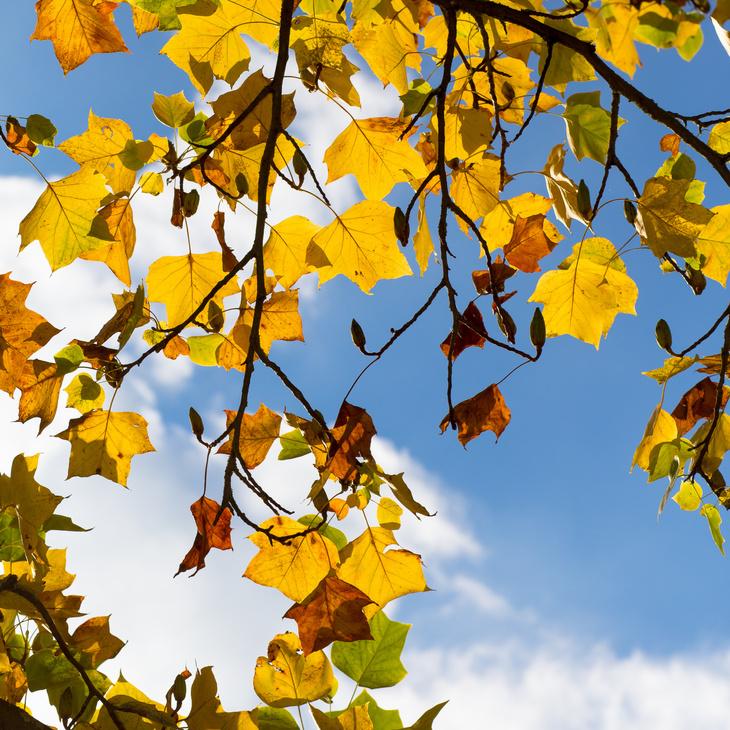
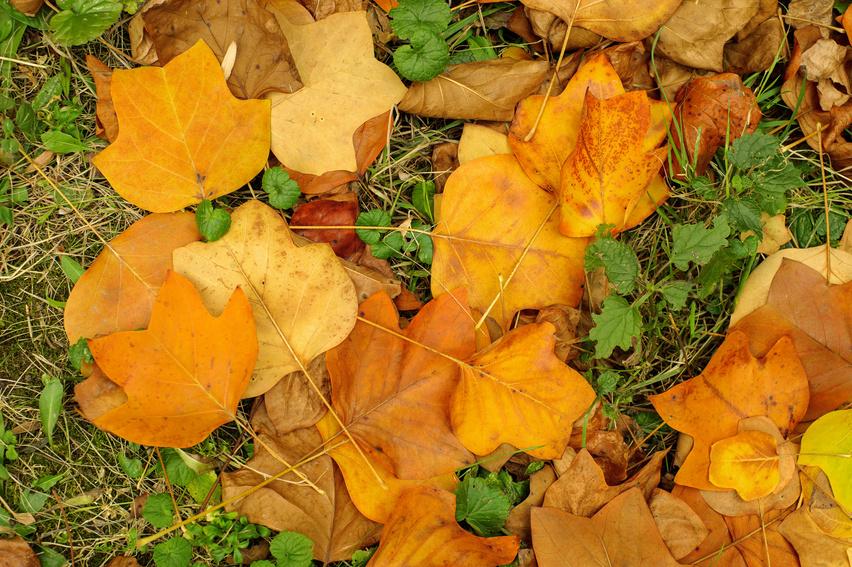
ENTER GENERAL INFORMATION
1. 2. 3. 4.
Open the Survey123 app. You can sign in or select “Continue without signing in.”
Select "Tulip Poplar and Ash Survey." Select "Collect."
Follow the survey prompts.
Current location: Use the target icon in the upper left corner of the map to increase accuracy to +/- a few meters. Tap again to stop.
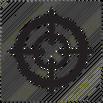
We know it’s repetitive to enter the same intro questions for each survey, but this helps with data accuracy. We’re working on ways to make this experience better, but thank you in the meantime!
PRO TIP
Use airplane mode while collecting data to save battery. Close the app when you aren't actively entering data.
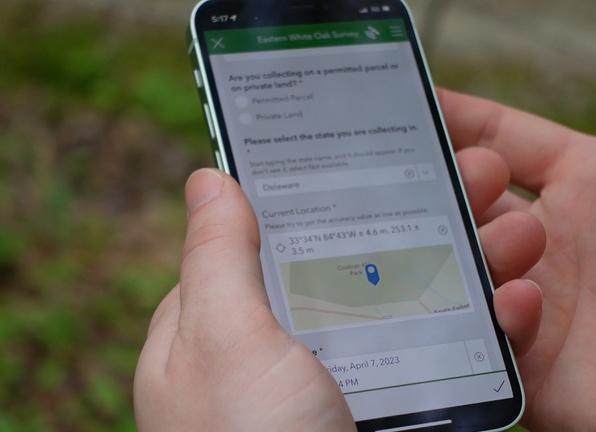

Did you look carefully and not find any tulip poplar in the area?
Select "Yes" when asked "Is this record for absence data" and record notes about the area where you didn't find tulip poplar.
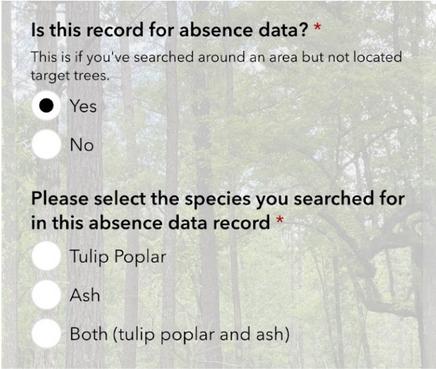
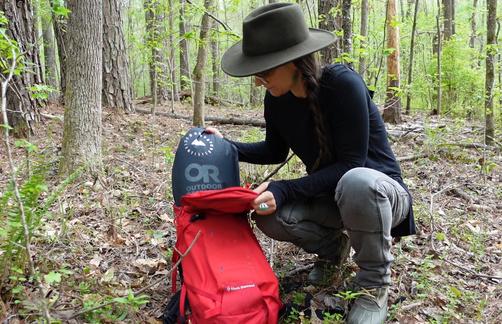
Select "Yes" to indicate that your tools are clean before proceeding.
If this is your first tree, the tools arrived clean.
If you sampled before and forgot to clean, do it now!
Please see page 18 for instructions.
Step 1: Step 2:
Step 3:
Use the measuring tape to find 4.5 feet (54 inches or 137 centimeters) from the base of the trunk.
Wrap the measuring tape snugly around the tree, make sure it is level.
Check to be sure you report centimeters.
If the tree has multiple trunks, measure below the split, at the narrowest portion.
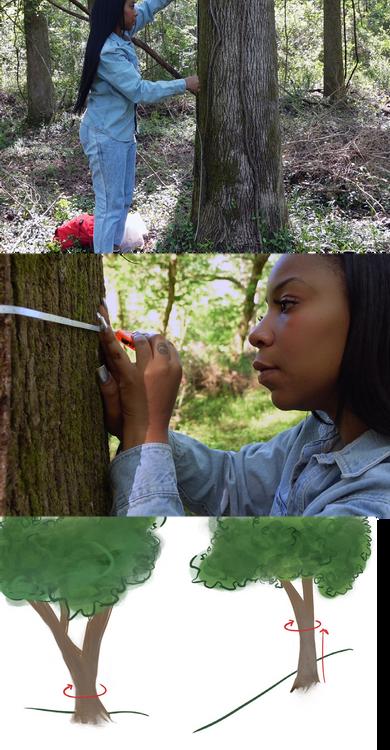

If the tree is on a slope, measure from the uphill side.

If you can easily reach branches and leaves, coll and one 4" twig. The leaves can be collected fr floor if they are directly under the target tree.
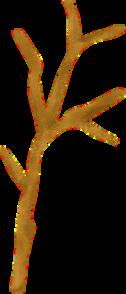
For branches 20 feet or closer in the canopy, use t saw-toss tool, page 10.
You will store the samples in 2 labeled envelopes with matching barcode numbers.
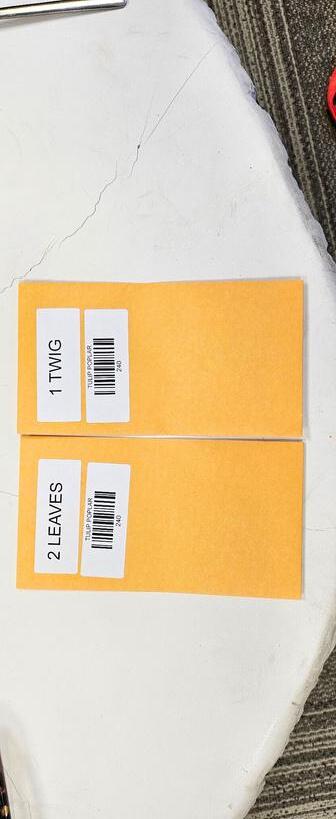
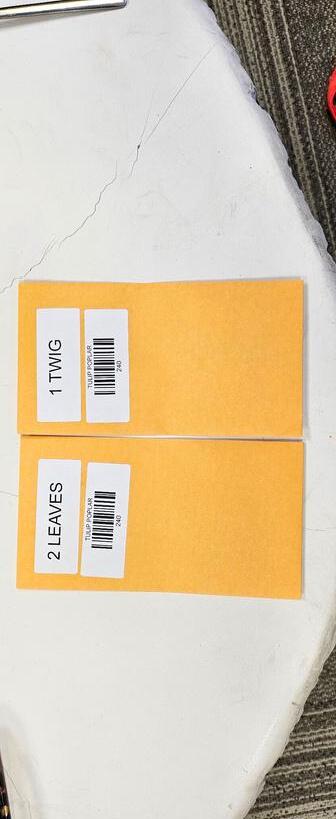
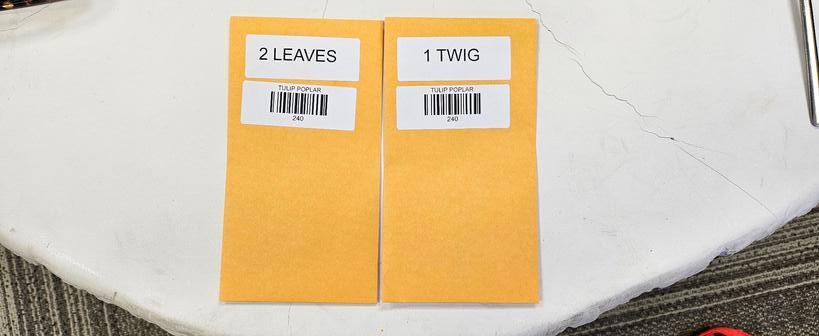
For branches over 20 feet high, use the slingshot sawtoss tool, pages 10-12.
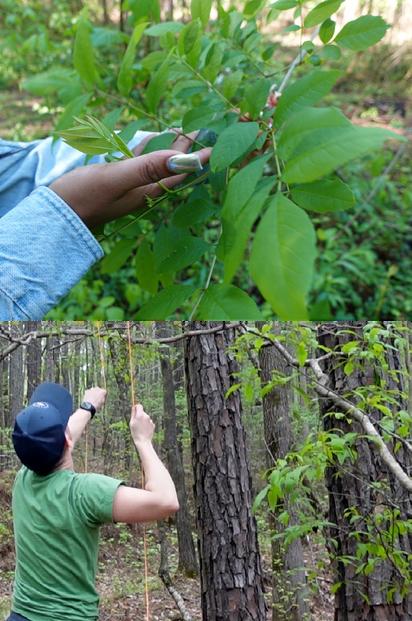
Step 1:
Tie one end of the cord to something small and heavy that you can toss: a rock, hefty stick, or a water bottle work well. Make sure the cord is coiled loosely at your feet, so the cord can follow your toss easily into the air.
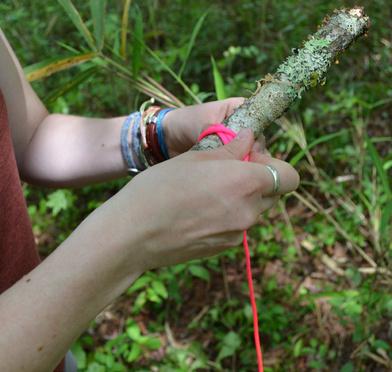

Step 2:
Aim for a crux, where one twig joins a larger branch.
Step 3:
Toss! We’ve had more success with underhand tosses, but try whatever works for you. It may take multiple tries! Once your line is over the branch, carefully pull the weighted side down until the metal part of the tool reaches the branch.
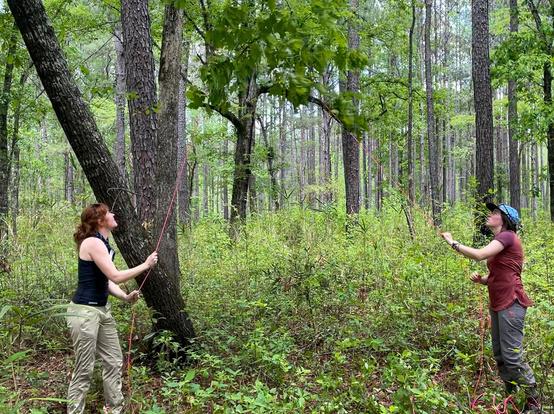
Step 4:
Keep tension on both sides of the saw and move the metal chain back and forth over the twig. Once the metal bites into the wood, keep the chain moving in a sawing motion.
Got your branch? Collect 2 leaves + 1 twig!
PRO TIP
You are shooting a small projectile. Wear eye protection and call out a warning before you shoot.
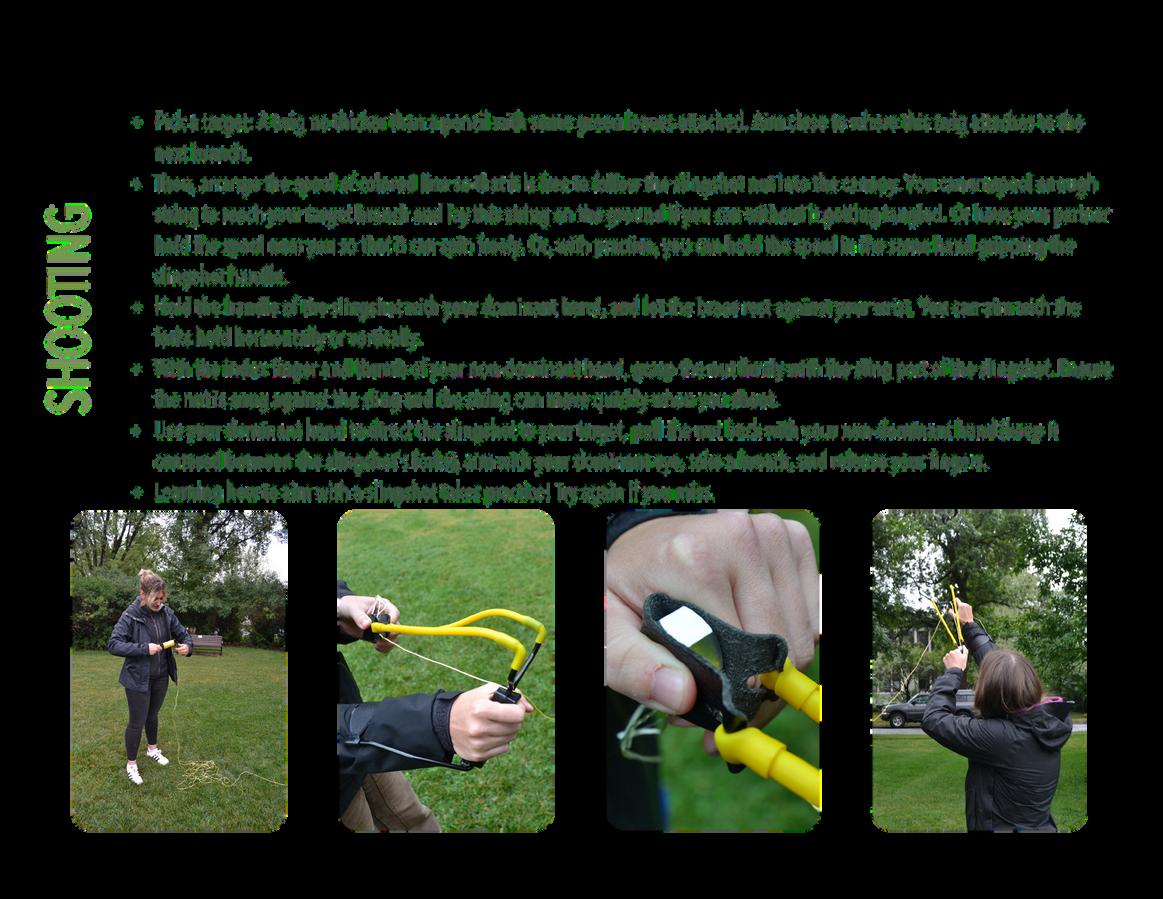



Once you have shot the nut over the target twig, tie one end of the saw-toss’s rope to the nut’s string.
Pull the opposite side of the nut’s string to hoist the sawtoss up until the saw portion meets the branch.
Pull back and forth on each side of the saw-toss’s rope to cut the wood. Keep the saw moving until you fell your twig!
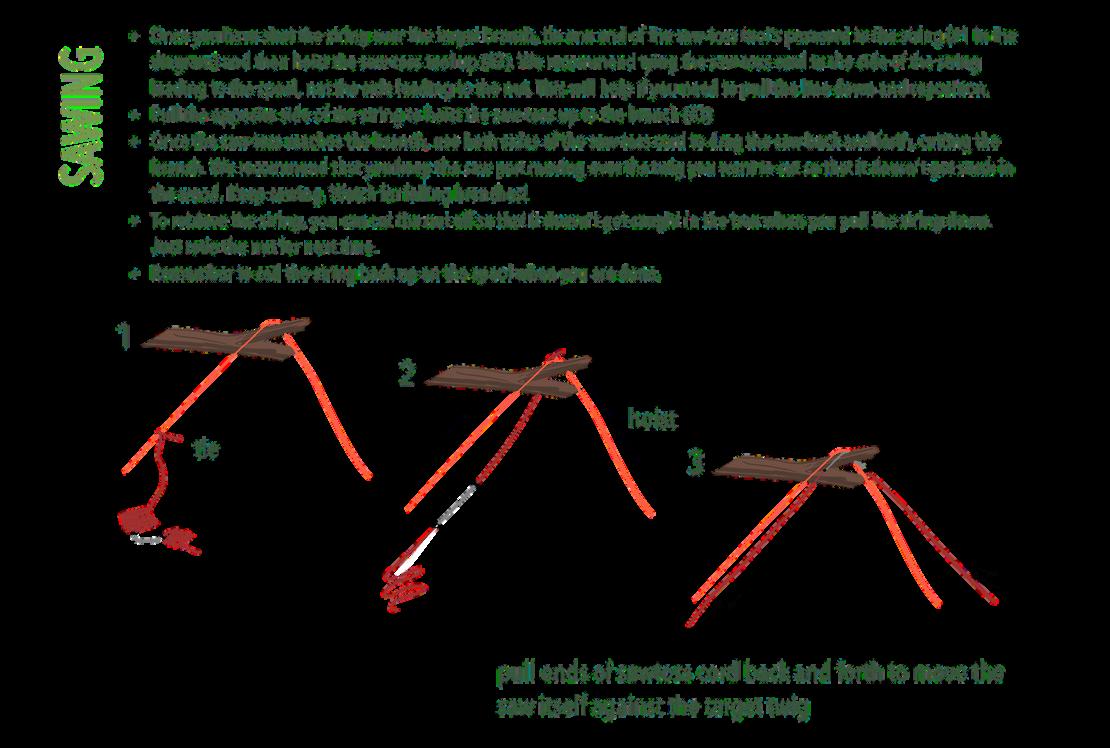

To retrieve the string, cut off or untie the nut so that it doesn’t get caught in the tree when you pull it down. PRO TIP

Putallsamplesfromonetreeinoneenvelope.Itisokaytotearorfold leavestofit.
Donotsealtheenvelopes.Puttheminthebagwithdesiccant.
Take a photograph of the tree from about 20 ft (6 meters) away. Have your partner stand next to the tree or place a pack on the ground for scale.
Record whether there was anything notable or unusual about your sample collection, or any unique characteristics about the tree and where to find it. Examples: Split trunk, height of large limb, a lightening scar, rotted area, distance and direction from a road or other marker.
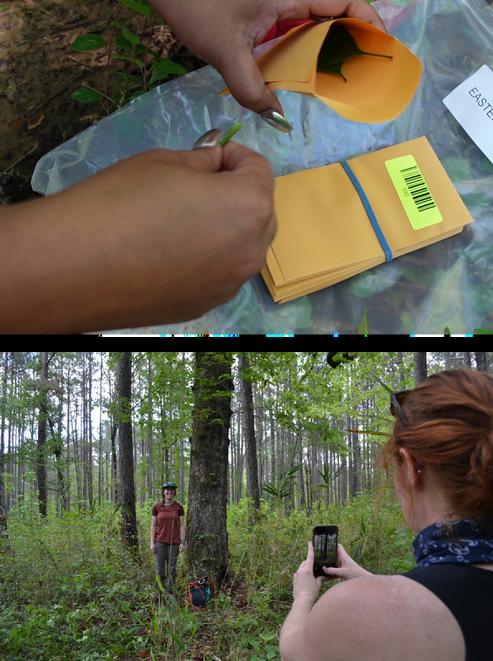
Tap the check mark on the bottom right-hand corner of the survey in your app. Choose "Send Later" if you aren’t in cell service or don’t want to use data. Send them later using the "Outbox."
To prevent the spread of forest pathogens (trees get sick too!) you must clean your equipment after every tree.
Use the alcohol dropper to drip along the braided metal of the saw (similar to lubing a bike chain). Use alcohol swabs to wipe.
Use alcohol wipes to clean the extractor and the exterior of the borer bit. Use the alcohol dropper to drip 5 drops of alcohol into the interior of the black borer bit. Cover both ends and shake back and forth before draining.
PRO TIP
Remember to refer to the “After Adventure” section of your training to learn how to pack up and send back samples and gear.

Once you are in a safe situation, after the emergency, alert Adventure Scientists staff about the incident by contacting: (406) 579-9702. ONLY contact this number if you are reporting an incident.
